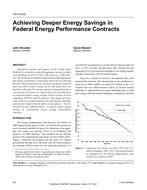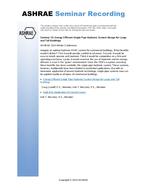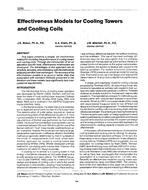Click here to purchase
Many failures of rotating machines such as compressors or pumps are revealed at an early stage by changes in noise during operation. Experienced specialists have long been able to acoustically identify emerging failures. Vibration analysis, i.e. the automated monitoring of structure-borne or airborne noise from a machine, has the potential to significantly advance machine monitoring. Speech recognition is now widespread on smartphones and increasingly also in cars and impressively demonstrates the potential of acoustic analysis. Nevertheless, acoustic or vibration monitoring systems have not yet become widely established for the majority of rotating machines. In this paper, the opportunities and limits of vibration measurement on rotating machines will be presented and an outlook into the future will be given. Opportunities: There seems to be no doubt that information about developing failures is available in the acoustic fingerprint of a machine, because humans with the appropriate experience are able to distinguish different error patterns. Due to the enormous development in terms of computing power and available memory, digital electronics are also very powerful today. The decomposition of an oscillation time-signal into individual frequencies is easy to calculate today. Neural networks for identifying errors and artificial intelligence are extremely powerful. Vibration analysis is an important building block for the complete implementation of predictive maintenance as a maintenance concept for machines because it can potentially detect errors earlier than other methods. Limits: In many cases, individual adjustment of the vibration monitoring to a specific application is still necessary today. “Learning” does not always work simply as plug & play. This necessary use of experts on site prevents broad scaling up. Only a fraction of the delivered compressors and pumps are currently equipped with vibration monitoring. Outlook: There is certainly potential for optimizing vibration monitoring with sensor fusion, i.e. in the combination of different sensors. If power consumption, pressures or rotational speed of a pump or compressor are known, the associated vibration signals can be analyzed much more precisely. This new approach can help to adapt frequency analysis easier and more automatically to an individual situation in the field.
Product Details
- Published:
- 2023
- Number of Pages:
- 8
- Units of Measure:
- Dual
- File Size:
- 1 file , 1.7 MB
- Product Code(s):
- D-AT-23-C007
- Note:
- This product is unavailable in Russia, Belarus


